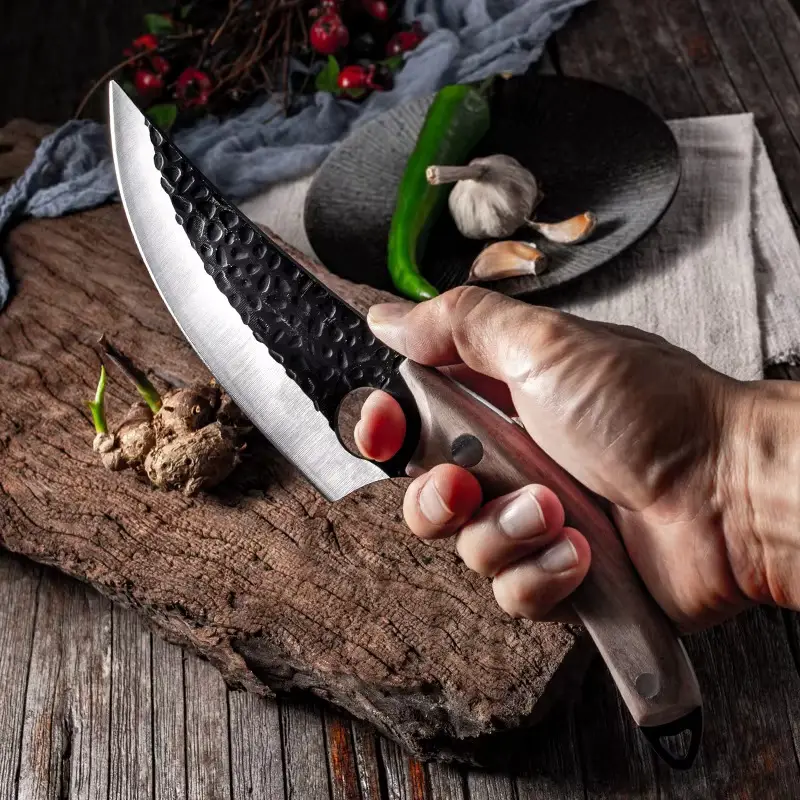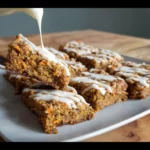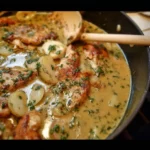Thanksgiving. The word alone conjures up images of family gatherings, crackling fireplaces, and, of course, the centerpiece of the feast: a golden-brown, perfectly roasted turkey. For years, the thought of tackling the Thanksgiving turkey filled me with a mixture of excitement and sheer panic. Would it be juicy? Would it be flavorful? Would it be cooked through? The pressure was immense! That was until I discovered this Easy Garlic and Herb Oven Roasted Turkey recipe. Let me tell you, this recipe is a game-changer. It’s unbelievably simple, yet delivers a turkey that is consistently moist, tender, and bursting with savory garlic and herb flavors. Even my notoriously picky family members raved about it, proclaiming it the best turkey they’d ever tasted. The aroma that fills your kitchen as this turkey roasts is simply divine, a promise of the deliciousness to come. If you’re looking for a stress-free, foolproof way to impress your guests and create a truly memorable Thanksgiving (or any special occasion!), look no further. This recipe is your secret weapon to turkey success.
Ingredients
This recipe shines in its simplicity, relying on fresh, quality ingredients to create a truly exceptional flavor profile. You won’t need a pantry full of obscure spices or complicated techniques. Just a handful of readily available items and a little bit of love are all it takes. Here’s what you’ll need to gather to create your own masterpiece of roasted turkey:
- 12 – 15 lb. Turkey: The star of the show! Opt for a fresh or fully thawed frozen turkey in this weight range to comfortably serve around 12 people. If you’re feeding a smaller crowd, you can adjust the recipe slightly or enjoy delicious leftovers.
- 1 Stick Unsalted Butter (Softened): Butter is key for both flavor and moisture. Using unsalted butter allows you to control the saltiness of the dish, and ensuring it’s softened makes it easier to create the herb butter rub.
- 1/4 Cup Olive Oil: Olive oil adds richness and helps the butter spread more easily, creating a beautifully browned and crispy skin on the turkey. Choose a good quality extra virgin olive oil for the best flavor.
- 3 Tablespoons Assorted Fresh Chopped Herbs (Basil, Rosemary, Parsley Recommended): Fresh herbs are what truly elevate this turkey, infusing it with aromatic and vibrant flavors. The combination of basil, rosemary, and parsley is classic and delicious, but feel free to experiment with other herbs like thyme, sage, or oregano based on your preferences. Ensure they are finely chopped to release their maximum flavor.
- Zest of 1 Lemon (Plus the Lemon Itself): Lemon zest adds a bright, citrusy note that cuts through the richness of the butter and herbs, creating a balanced and refreshing flavor. The halved lemon itself is stuffed into the cavity to further infuse the turkey from the inside out.
- 1/2 Yellow Onion: Onion adds a subtle sweetness and savory depth to the turkey. Halving it allows for easy stuffing into the cavity and imparts a gentle onion flavor throughout the roasting process.
- 1 Stalk Celery (Chopped in Long Strips): Celery, along with onion and garlic, forms the aromatic base for the turkey. Chopping it into long strips makes it easy to handle and stuff into the cavity alongside the other aromatics.
- 1 Head Garlic: Garlic is the namesake ingredient and provides a pungent, savory flavor that is simply irresistible. Halving the garlic head crosswise exposes the cloves and allows their flavor to permeate the turkey during roasting.
- 1/4 Cup Kosher Salt (Approximately): Salt is crucial for seasoning the turkey and enhancing its natural flavors. Kosher salt is recommended as it’s less salty by volume than table salt and distributes more evenly. You may need slightly more or less depending on the size of your turkey and your personal preference.
- 2 Tablespoons Black Pepper (To Taste): Black pepper adds a touch of spice and complements the other seasonings. Freshly ground black pepper is always preferred for its bolder and more aromatic flavor. Adjust the amount to your taste.
Instructions
Don’t let the thought of roasting a whole turkey intimidate you! This recipe breaks down the process into simple, manageable steps, making it achievable for even novice cooks. Follow these instructions, and you’ll be rewarded with a perfectly roasted turkey that will impress everyone at your table:
- Bring Turkey to Room Temperature: Start by taking your turkey out of the refrigerator approximately 30 minutes before you plan to begin preparation. This crucial step allows the turkey to come closer to room temperature, which promotes more even cooking throughout. A colder turkey will take longer to cook in the center, potentially leading to dry breast meat while waiting for the thighs to reach the correct temperature.
- Preheat the Oven to 450 Degrees Fahrenheit: Set your oven to a high initial temperature of 450°F (232°C). This high heat at the beginning helps to quickly brown the skin and create a beautiful golden color. It also jumpstarts the cooking process.
- Prepare Your Ingredients: While the oven preheats and the turkey comes to room temperature, get all your ingredients ready. In a medium-sized bowl, combine the softened unsalted butter, olive oil, chopped fresh herbs (basil, rosemary, and parsley), and lemon zest. Mix these together thoroughly until well combined, creating a fragrant herb butter. In a separate small bowl, place the kosher salt and black pepper for easy access during seasoning. Lay out the halved garlic head, halved yellow onion, celery strips, and halved lemon on your work surface, ready for stuffing into the turkey cavity. This mise en place will streamline the process and make the assembly much smoother.
- Get Hands-On with Your Turkey (Preparation): This is where you get a little bit messy, but it’s all in the name of deliciousness! Remove any gravy packets and giblets from the turkey cavity. These are often found in the neck and body cavities. Set them aside if you plan to make gravy or stock later. Place the turkey on a roasting pan. Pat the turkey completely dry with paper towels. This is a vital step to ensure crispy skin. Moisture on the skin will steam the turkey instead of allowing it to brown and crisp. Dry the top, inside the cavity, and the underside of the turkey thoroughly.
- Herb Butter Massage: Now for the fun part! Grab a generous amount of the prepared herb butter mixture and generously rub it all over the turkey. Be sure to cover every surface: the breast, legs, wings, underneath the turkey, and even inside the cavity. Don’t be shy – the more herb butter, the more flavor and moisture!
- Butter Under the Skin: For extra juicy and flavorful breast meat, take your fingers and gently work them under the skin of the turkey breast, separating the skin from the meat as carefully as possible without tearing the skin. Once you’ve created a pocket, rub some more of the herb butter directly under the skin of the breast. This places the flavor right next to the meat and helps to keep the breast incredibly moist during roasting.
- Season Generously: Sprinkle the kosher salt and black pepper evenly all over the turkey, ensuring you season the top, bottom, sides, and inside the cavity. You want the turkey to look like it has been lightly dusted with snow. Don’t be afraid to be generous with the seasoning. Proper seasoning is key to a flavorful turkey. You may not use the full 1/4 cup of salt, but use enough to thoroughly season the bird.
- Stuff the Cavity: Halve the garlic head crosswise, exposing the centers of the cloves. Stuff the halved garlic, halved onion, celery strips, and halved lemon into the turkey cavity. These aromatics will infuse the turkey from the inside out as it roasts, adding another layer of flavor.
- Prepare for Roasting: Tie the turkey legs together with kitchen twine. This helps the turkey cook more evenly and gives it a more appealing shape. Tuck the wing tips under the turkey’s body. This prevents the wing tips from burning during the roasting process. Place the prepared turkey in the preheated oven.
- Initial High Heat Roast: Bake the turkey at 450°F (232°C) for the first 30 minutes. This high heat blast is essential for browning the skin and locking in juices.
- Reduce Heat and Tent with Foil: After 30 minutes at high heat, reduce the oven temperature to 350°F (175°C). Tent the turkey loosely with aluminum foil. Tenting with foil prevents the skin from over-browning before the turkey is cooked through, while still allowing for some air circulation. Continue to cook for 2 hours.
- Check Internal Temperature: After 2 hours of cooking at 350°F, remove the turkey from the oven and insert a meat thermometer into the thickest part of the thigh, being careful not to touch the bone. The internal temperature should reach 165°F (74°C) for safe consumption.
- Continue Cooking and Check Regularly: If the thigh temperature is significantly below 165°F, set a timer for another 45 minutes and check the temperature again. If it’s at 150°F (66°C) or higher, you’re getting close. From this point onwards, check the temperature every 10-15 minutes.
- Crisp the Skin (Optional): Remove the foil for the last 30 minutes of baking, unless the skin is already getting too browned. Removing the foil allows the skin to crisp up beautifully. If the skin is browning too quickly, you can loosely tent it again with foil to prevent burning.
- Rest Before Carving: Once the thigh registers 165°F (74°C), remove the turkey from the oven. Crucially, allow the turkey to rest for 30 minutes before carving. This resting period is essential. During resting, the juices redistribute throughout the meat, resulting in a much more moist and tender turkey. If you carve immediately, the juices will run out, leaving you with drier meat. Tent the turkey loosely with foil during the resting time to keep it warm.
- Carve and Serve: After the resting period, carve your beautiful, herb-infused turkey and prepare to be showered with compliments!
Nutrition Facts
Understanding the nutritional content of your meal can be helpful for planning and making informed dietary choices. Here’s a breakdown of the approximate nutrition information for this Easy Garlic and Herb Oven Roasted Turkey recipe:
- Servings: 12
- Calories: 767 kcal per serving
Please Note: These are estimates and can vary depending on the exact size of the turkey, the specific ingredients used, and portion sizes. This information is based on the recipe as written and is intended as a general guideline.
Preparation Time
Time is often of the essence, especially when preparing a large meal like Thanksgiving dinner. This recipe is designed to be relatively straightforward and efficient. Here’s a breakdown of the time involved:
- Prep Time: 25 minutes
- Cook Time: 3 hours
- Total Time: 3 hours 25 minutes
Remember to factor in the resting time of 30 minutes after cooking when planning your meal timing. While the cook time may seem lengthy, most of it is hands-off oven time, allowing you to focus on preparing side dishes and other aspects of your meal.
How to Serve
A perfectly roasted turkey is the centerpiece, but the sides and accompaniments truly complete the Thanksgiving (or any celebratory) feast. Here are some delicious ways to serve your Easy Garlic and Herb Oven Roasted Turkey:
- Classic Thanksgiving Sides:
- Creamy Mashed Potatoes: A must-have for soaking up delicious gravy.
- Traditional Stuffing or Dressing: Whether you prefer bread-based or cornbread stuffing, it’s a classic pairing.
- Cranberry Sauce: The tartness of cranberry sauce beautifully complements the richness of the turkey. Homemade or canned, it’s a Thanksgiving staple.
- Green Bean Casserole: A comforting and crowd-pleasing side dish.
- Sweet Potato Casserole: The sweetness of sweet potatoes offers a lovely contrast to the savory turkey.
- Dinner Rolls or Biscuits: Perfect for enjoying with butter and soaking up gravy.
- Elevate Your Gravy: Don’t forget the gravy! Use the pan drippings from the roasted turkey to create a rich and flavorful gravy. You can enhance it with some of the roasted garlic cloves from the turkey cavity for an extra garlic kick.
- Fresh and Bright Sides:
- Roasted Brussels Sprouts: Roasting brings out the sweetness of Brussels sprouts.
- Butternut Squash Risotto: A more sophisticated and elegant side option.
- Autumn Salad with Apples and Walnuts: A refreshing salad to balance the richness of the meal.
- Carving Station: Create a beautiful carving station with your roasted turkey as the centerpiece. Arrange your side dishes around it, along with serving utensils, gravy boat, and carving knives. This makes it easy for guests to serve themselves and creates a visually appealing presentation.
- Leftovers Galore!: Roasted turkey leftovers are incredibly versatile. Plan to use your leftover turkey in:
- Turkey Sandwiches: Classic and satisfying.
- Turkey Soup or Chili: Warm and comforting for the days after Thanksgiving.
- Turkey Pot Pie: A hearty and delicious way to use leftover turkey and vegetables.
- Turkey Salad: Perfect for light lunches or appetizers.
Additional Tips for Turkey Roasting Success
Even with an easy recipe, a few extra tips can help you achieve turkey roasting perfection every time. Consider these helpful hints:
- Choose the Right Turkey Size: Estimate about 1 to 1.5 pounds of turkey per person to ensure you have enough for everyone and some leftovers. For 12 servings, a 12-15 lb turkey is ideal.
- Consider Brining (Optional): For an even more moist and flavorful turkey, consider brining it overnight. A brine is a saltwater solution that helps the turkey retain moisture during cooking. While this recipe is already designed for juiciness, brining can take it to the next level. There are many brine recipes available online, including variations with herbs and spices.
- Use a Meat Thermometer – It’s Your Best Friend! Don’t rely solely on cooking times. A meat thermometer is the most accurate way to ensure your turkey is cooked to a safe internal temperature of 165°F (74°C) in the thigh. An instant-read thermometer is particularly useful for quick and accurate temperature checks.
- Don’t Skip the Resting Time: As emphasized earlier, resting the turkey for 30 minutes after roasting is crucial. It allows the juices to redistribute, resulting in a much more tender and moist bird. Resist the urge to carve immediately!
- Make Gravy While the Turkey Rests: Use the resting time to prepare your gravy. Skim off excess fat from the roasting pan drippings, then use the remaining drippings to create a flavorful gravy on the stovetop. This maximizes efficiency and ensures your gravy is ready when the turkey is carved.
Frequently Asked Questions (FAQ)
Got questions about roasting your garlic and herb turkey? Here are answers to some common queries:
Q1: Can I use dried herbs instead of fresh herbs?
A: While fresh herbs are highly recommended for the best flavor, you can substitute dried herbs in a pinch. Use approximately 1 tablespoon of dried herbs for every 3 tablespoons of fresh herbs. Keep in mind that dried herbs have a more concentrated flavor, so use them sparingly and consider rehydrating them slightly by rubbing them between your fingers before adding them to the butter mixture.
Q2: What if my turkey is larger or smaller than 12-15 lbs? How do I adjust the cooking time?
A: For a smaller turkey (e.g., 10 lbs), you may need to reduce the cooking time slightly. For a larger turkey (e.g., 18 lbs), you will need to increase the cooking time. Always rely on a meat thermometer to ensure the turkey reaches an internal temperature of 165°F (74°C) in the thigh. A general guideline is to roast for approximately 13 minutes per pound for an unstuffed turkey at 350°F (175°C) after the initial high-heat browning. Start checking the temperature earlier for smaller turkeys and later for larger ones.
Q3: Can I stuff the turkey with stuffing instead of just aromatics?
A: While stuffing the turkey cavity with stuffing is a traditional practice, it’s generally recommended to cook stuffing separately. Stuffing inside the turkey can increase the cooking time and make it more difficult to ensure both the turkey and the stuffing reach safe temperatures. If you choose to stuff the turkey, make sure the stuffing reaches 165°F (74°C) as well, and be aware that the turkey may take longer to cook. For safety and even cooking, consider baking your stuffing separately in a casserole dish.
Q4: What’s the best way to thaw a frozen turkey?
A: The safest way to thaw a frozen turkey is in the refrigerator. Allow approximately 24 hours of thawing time for every 5 pounds of turkey. For a 12-15 lb turkey, this means 3-4 days in the refrigerator. Place the turkey in a pan to catch any drips. You can also thaw a turkey in cold water (changing the water every 30 minutes), but this is less ideal and requires more attention. Never thaw a turkey at room temperature, as this can promote bacterial growth.
Q5: Can I use different herbs or seasonings?
A: Absolutely! Feel free to customize the herb butter and seasonings to your liking. Thyme, sage, oregano, and marjoram are all excellent choices for turkey. You can also add other aromatics like shallots, leeks, or different types of citrus to the cavity. Experiment and find your favorite flavor combinations! This recipe is a fantastic base that you can adapt to your personal taste preferences.
With this Easy Garlic and Herb Oven Roasted Turkey recipe and these helpful tips, you’re well on your way to creating a Thanksgiving centerpiece that is both delicious and stress-free. Enjoy the process, savor the aroma, and get ready to impress your guests with your perfectly roasted turkey! Happy Thanksgiving!
Print
Easy Garlic and Herb Oven Roasted Turkey Recipe
Ingredients
- 12 – 15 lb. Turkey: The star of the show! Opt for a fresh or fully thawed frozen turkey in this weight range to comfortably serve around 12 people. If you’re feeding a smaller crowd, you can adjust the recipe slightly or enjoy delicious leftovers.
- 1 Stick Unsalted Butter (Softened): Butter is key for both flavor and moisture. Using unsalted butter allows you to control the saltiness of the dish, and ensuring it’s softened makes it easier to create the herb butter rub.
- 1/4 Cup Olive Oil: Olive oil adds richness and helps the butter spread more easily, creating a beautifully browned and crispy skin on the turkey. Choose a good quality extra virgin olive oil for the best flavor.
- 3 Tablespoons Assorted Fresh Chopped Herbs (Basil, Rosemary, Parsley Recommended): Fresh herbs are what truly elevate this turkey, infusing it with aromatic and vibrant flavors. The combination of basil, rosemary, and parsley is classic and delicious, but feel free to experiment with other herbs like thyme, sage, or oregano based on your preferences. Ensure they are finely chopped to release their maximum flavor.
- Zest of 1 Lemon (Plus the Lemon Itself): Lemon zest adds a bright, citrusy note that cuts through the richness of the butter and herbs, creating a balanced and refreshing flavor. The halved lemon itself is stuffed into the cavity to further infuse the turkey from the inside out.
- 1/2 Yellow Onion: Onion adds a subtle sweetness and savory depth to the turkey. Halving it allows for easy stuffing into the cavity and imparts a gentle onion flavor throughout the roasting process.
- 1 Stalk Celery (Chopped in Long Strips): Celery, along with onion and garlic, forms the aromatic base for the turkey. Chopping it into long strips makes it easy to handle and stuff into the cavity alongside the other aromatics.
- 1 Head Garlic: Garlic is the namesake ingredient and provides a pungent, savory flavor that is simply irresistible. Halving the garlic head crosswise exposes the cloves and allows their flavor to permeate the turkey during roasting.
- 1/4 Cup Kosher Salt (Approximately): Salt is crucial for seasoning the turkey and enhancing its natural flavors. Kosher salt is recommended as it’s less salty by volume than table salt and distributes more evenly. You may need slightly more or less depending on the size of your turkey and your personal preference.
- 2 Tablespoons Black Pepper (To Taste): Black pepper adds a touch of spice and complements the other seasonings. Freshly ground black pepper is always preferred for its bolder and more aromatic flavor. Adjust the amount to your taste.
Instructions
- Bring Turkey to Room Temperature: Start by taking your turkey out of the refrigerator approximately 30 minutes before you plan to begin preparation. This crucial step allows the turkey to come closer to room temperature, which promotes more even cooking throughout. A colder turkey will take longer to cook in the center, potentially leading to dry breast meat while waiting for the thighs to reach the correct temperature.
- Preheat the Oven to 450 Degrees Fahrenheit: Set your oven to a high initial temperature of 450°F (232°C). This high heat at the beginning helps to quickly brown the skin and create a beautiful golden color. It also jumpstarts the cooking process.
- Prepare Your Ingredients: While the oven preheats and the turkey comes to room temperature, get all your ingredients ready. In a medium-sized bowl, combine the softened unsalted butter, olive oil, chopped fresh herbs (basil, rosemary, and parsley), and lemon zest. Mix these together thoroughly until well combined, creating a fragrant herb butter. In a separate small bowl, place the kosher salt and black pepper for easy access during seasoning. Lay out the halved garlic head, halved yellow onion, celery strips, and halved lemon on your work surface, ready for stuffing into the turkey cavity. This mise en place will streamline the process and make the assembly much smoother.
- Get Hands-On with Your Turkey (Preparation): This is where you get a little bit messy, but it’s all in the name of deliciousness! Remove any gravy packets and giblets from the turkey cavity. These are often found in the neck and body cavities. Set them aside if you plan to make gravy or stock later. Place the turkey on a roasting pan. Pat the turkey completely dry with paper towels. This is a vital step to ensure crispy skin. Moisture on the skin will steam the turkey instead of allowing it to brown and crisp. Dry the top, inside the cavity, and the underside of the turkey thoroughly.
- Herb Butter Massage: Now for the fun part! Grab a generous amount of the prepared herb butter mixture and generously rub it all over the turkey. Be sure to cover every surface: the breast, legs, wings, underneath the turkey, and even inside the cavity. Don’t be shy – the more herb butter, the more flavor and moisture!
- Butter Under the Skin: For extra juicy and flavorful breast meat, take your fingers and gently work them under the skin of the turkey breast, separating the skin from the meat as carefully as possible without tearing the skin. Once you’ve created a pocket, rub some more of the herb butter directly under the skin of the breast. This places the flavor right next to the meat and helps to keep the breast incredibly moist during roasting.
- Season Generously: Sprinkle the kosher salt and black pepper evenly all over the turkey, ensuring you season the top, bottom, sides, and inside the cavity. You want the turkey to look like it has been lightly dusted with snow. Don’t be afraid to be generous with the seasoning. Proper seasoning is key to a flavorful turkey. You may not use the full 1/4 cup of salt, but use enough to thoroughly season the bird.
- Stuff the Cavity: Halve the garlic head crosswise, exposing the centers of the cloves. Stuff the halved garlic, halved onion, celery strips, and halved lemon into the turkey cavity. These aromatics will infuse the turkey from the inside out as it roasts, adding another layer of flavor.
- Prepare for Roasting: Tie the turkey legs together with kitchen twine. This helps the turkey cook more evenly and gives it a more appealing shape. Tuck the wing tips under the turkey’s body. This prevents the wing tips from burning during the roasting process. Place the prepared turkey in the preheated oven.
- Initial High Heat Roast: Bake the turkey at 450°F (232°C) for the first 30 minutes. This high heat blast is essential for browning the skin and locking in juices.
- Reduce Heat and Tent with Foil: After 30 minutes at high heat, reduce the oven temperature to 350°F (175°C). Tent the turkey loosely with aluminum foil. Tenting with foil prevents the skin from over-browning before the turkey is cooked through, while still allowing for some air circulation. Continue to cook for 2 hours.
- Check Internal Temperature: After 2 hours of cooking at 350°F, remove the turkey from the oven and insert a meat thermometer into the thickest part of the thigh, being careful not to touch the bone. The internal temperature should reach 165°F (74°C) for safe consumption.
- Continue Cooking and Check Regularly: If the thigh temperature is significantly below 165°F, set a timer for another 45 minutes and check the temperature again. If it’s at 150°F (66°C) or higher, you’re getting close. From this point onwards, check the temperature every 10-15 minutes.
- Crisp the Skin (Optional): Remove the foil for the last 30 minutes of baking, unless the skin is already getting too browned. Removing the foil allows the skin to crisp up beautifully. If the skin is browning too quickly, you can loosely tent it again with foil to prevent burning.
- Rest Before Carving: Once the thigh registers 165°F (74°C), remove the turkey from the oven. Crucially, allow the turkey to rest for 30 minutes before carving. This resting period is essential. During resting, the juices redistribute throughout the meat, resulting in a much more moist and tender turkey. If you carve immediately, the juices will run out, leaving you with drier meat. Tent the turkey loosely with foil during the resting time to keep it warm.
- Carve and Serve: After the resting period, carve your beautiful, herb-infused turkey and prepare to be showered with compliments!
Nutrition
- Serving Size: One Normal Portion
- Calories: 767 kcal






